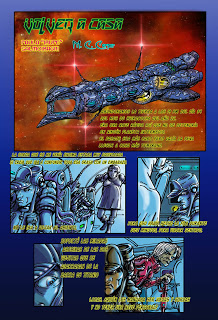One of the big advantages of signing with a traditional publisher, is access to industry leading editors. If you’re new to publishing, you may have no idea about the various types of editors and what each one does. Hopefully this post will help demystify some of that. The size of the publisher may mean that a single person wears one or more of the follow hats. For instance the acquisition editor and the structural editor may be the same person. Also, some of these tasks may be hired out to freelancers and, therefore, are not actually direct employees of the publisher. This has become common lately as publishers trim their staffs to become more efficient. But regardless of who, or where, each task is performed any good publisher will have someone filling each of the following roles.
Acquisition Editor
Usually when we imagine editors, we think of a person, red pen in hand, busily reading marking up a manuscript, but some acquisition editors may not do any editing at all. In fact, it’s possible that the acquiring editor might not even read the book. They could be working off of a summary created by someone in the submissions department or be given a mandate from their boss (the publisher) who has decided that a particular author or title is a potential bestseller and needs to be snatched up.
One way to think about the acquisition editor is “the book’s champion” and “project leader” rolled into one. When most people refer to “their editor” they are speaking of their acquisition editor because they are the writer”s main contact person within the company. It’s important for the author and acquisition editor to have a good working relationship. If you get on their bad side, it can spell disaster for you current project, and severely decrease the prospects of any future contracts coming your way.
Acquisition editors are the ones that ultimately get a book “bought” and shepherd it through a long and lengthy process. First they need to get all other departments “on board” and then later they’ll coordinate with all those departments as the books are moved into production and beyond. In this way they act as consensus builders and organizers. When you hear stories of a book being “orphaned,” it’s usually because the acquisition editor has left the publisher. This means that their projects will be reassigned, and it’s possible that new person may not have the same passion for the work. They might even disagree with the decision to acquire the work in the first place, which can spell disaster for the book’s prospects and might even result in the project being killed altogether.
Acquisition editors can have a significant impact on the reputation of the publisher. They are defining the type of works the house is known for based on the books they green light. Are they generally looking for blockbuster titles, literary sleepers, or quirky original works? Do they focus on famous authors or are they open to new discoveries? Do they pick titles that are well received come award season? This influence in directing the publisher is one of the reasons why editors are recognized for awards like the Hugo and when all acquisition editors are looked at together they are ultimately responsible for determining the trends and direction of the genre.
Structural Editor (sometimes referred to as content editor)
This is an important role, that in my opinion is very hard to find when you are self-published. A good structural editor has years (probably decades) of experience editing hundreds of books and REALLY knows what works and what doesn’t. Finding someone who is qualified to do this is difficult, especially given the extreme subjectivity of the task. In general, those that can are already too busy to take on someone new, and because they are highly skilled, their service comes with a high price tag. Access to a good structural editor is one of the biggest advantages that traditional publishing still has, in my opinion. If they start to scrimp, and sign projects “as is” then they will lose a significant value added component.
Structural editors are the ones who focus on character motivations and development, pacing, style/voice, flow, consistency and they are on the lookout for plot holes or things that may confuse the reader. They are the “big picture” person, that aren’t as intimately familiar with the project as the author. In this way, they can see what is “actually” in the book, and not the things that the author “thought” they had done.
A good structural editor “gets your book” and what you are trying to achieve, then they point out areas that are in need of improvement. When structural editing works well, the recommendations come back to the author as “ah-ha” moments where they say to themselves, “I can’t believe I didn’t think of that!” If there is great confusion, or major changes indicated that make no sense to the author, it may indicate a failure to clearly articulate your vision. The structural process will go the most smoothly on projects where the structural editor and the author are on the same page, and can be a real struggle if there is a desire to turn the book into something that the author never intended.
Generally, structural feedback is going to be provided in the form of a write up of various impressions, as well as some in-line comments indicating thoughts, impressions or questions that may occurred to the editor while reading. In a well written story, those questions are already answered by the author, and so it may be a matter of moving things around, or an affirmation that the author is leading the reader in an intended direction, which will become clear further on in the story.
Some structural editors will be concerned with improving the “marketability” of the book and will look for potential land mines that might effect the book’s commercial viability. Sometimes this may mean nudging an author’s intent. In others, it may be that the structural editor interpreted a scene (or character) in a way that the author had not desired.
Usually a good structural editor will comment on both aspects that worked as well as those that did not. Sometimes an editor will offer specific recommendations such as a potential “fix” or they might merely be pointing out something for the author to address in their own way. Where one editor might say, “I prefer the book to start with the main character rather than the protagonist. ” Another one may say, “I want the book to start with the main character setting off to go to castle.” While it will certainly vary from author to author, I find that an editor pointing out something that “isn’t working” will lead me to a better solution than if they indicate a specific fix. Neil Gaiman sums this up perfectly, “Remember: when people tell you something’s wrong or doesn’t work for them, they are almost always right. When they tell you exactly what they think is wrong and how to fix it, they are almost always wrong.”
The structural editor is who the author will probably have the most “head-butting” with, and if the acquisition editor and the structural editor are the same person then you need to make sure that any disagreements in content don’t turn out to souring their enthusiasm for the project. Because structural editing can be so subjective it is impossible to know whose opinion should be followed. Is this because the author did a bad job conveying information? Or did the editor not pay close enough attention? Is the input valid? Or does the author disagree with the opinion?
There needs to be a fair amount of trust and respect between the author and their structural editor. Unfortunately these are take time to build, and so if you can keep the same structural editor over several projects it will be easier as the years go on. In any case, each party needs to be able to articulate their position, and never resort to arbitrary statements such as, “Because I said so,” or “Because I like/dislike it this way.” As previously mentioned, it’s impossible to determine who is “right” and who is “wrong,” so the obvious question is, “Who has the final say?”
This is why it is important for you to understand the clauses in your contract. And recognize what you signed up for when putting pen to paper. Unless the manuscript is signed and accepted as submitted (a rare situation), then there will be some language indicating whether the author or the publisher ultimately controls the content. For the contracts that I sign, my stance is that I determine the content, and the publisher’s role is to say yes or no. In this way, we both have our own degree of power. For me, I get to be the final arbitrator on any items of contention, and the publisher, because they wield veto power that can cause the project to be squashed, have the last word.
Generally, at the end of the structural editing, a revised manuscript is provided and accepted (triggering a royalty advance payment). The structural editor may re-read the entire manuscript, or simply review those areas where changes were made. But at this point the story is basically “locked in” and no major changes will be made.
Copy Editor
The copy editor’s job is basically as a fact-checker. While serving a larger role for non-fiction work, even fiction titles need someone to check facts. Does the author indicate a character is fifteen going on sixteen in one section but than later says their seventeenth birthday has arrived? Did the author change a character’s name from Simeon to Simon and not find all the old references? Is someone described as having brown hair at one point and blond in another? Is there a scene describing them walking across the room but then you say they stand up from the table where they were at before? Maybe they reminisce that a monumental event happened the day that Buzz Armstrong walked on the moon? (Neil Armstrong was the first man to walk on the moon, Buzz Aldrin was the second. Do you mention that miners used parakeets as early warning gas detectors when it was actually canaries that played that role. You get the idea. There are any number of mistakes that could have been made and the copy editor’s job is to find them. A good copy editior has an exceptional attention to detail and likes nothing more than catching inconsistencies.
Some of these changes are made “in line” (directly to the text of the book which is still in Word) others may be added as a comment bubble that is shown alongside the manuscript.
Line Editor
The line editor’s is to not concerned with “the story”, but on the specific words that the story in constructed from. They are the ones who are responsible for ensuring noun/verb agreement, consistency with tense, the proper placement of commas, and finding typos and word choice errors. For instance did the author use compliment when they meant to use complement? They are the grammar nazis who are masters of punctuation. They also are there to enforce consistency by a strict adherence to the publisher’s style guide: single spaces after periods, no spaces around em-dashes, the use of the oxford comma (the one before and in a list of objects), and ensure consistency of capitalization (is it “my lord”, “My Lord”, or “my Lord”).
The line editor is also looking for awkwardly constructed sentences, and may comment on changes to dialog to make it seem more realistic. They are essentially the clean-up crew and the last line of defense. In a nutshell, their job is to make the author look good and ensure the work is polished and professional.
Most of the changes made by the line editor will be done directly “in line” although they may call out a comment here and there related to possible solutions to correct awkward phrasing.
In many cases the line editor and the copy editor will be one and the same, in the cases where they are different people they will usually work serially, with the copy editor doing their pass, then the line editor and only once both of their comments are included in the document will that be sent back to the author.
Proof Reader
This is the person that ensures quality control as the book moves from a word document to the final layout for printing. While they may find a mistake that one of the editors missed (like a it’s verses its) their primary job is to watch for errors related to layout. Things like, are any words that were supposed to be bolded or italicized in the right format? Are all the titles consistent with respect to font size, centering, and placement on the page. Is there a section break at the bottom of the page instead of the top? Is there a poem that was supposed to be centered which is now being treated like a paragraph? Did a whole section get omitted? Are there places where the kerning (spacing between letters) is too tight? Are there paragraph reflow problems where paragraphs break wrong or bleed together improperly?
Process
Now that we have outlined all the various editors and their roles I want to just quickly mention process before wrapping this post up. A new author should be aware what is expected at each stage as it will make ensure their book production is kept on track.
Obviously it makes no sense to do copy or line editing before the structural edit, as that may mean that time is spent on sections that won’t make it into the final book, not to mention that newly written sections wouldn’t get their necessary copy/line editing. But it is just as important to not make structural edits once you have advanced to the copy/line editing stage. Just because you came up with a new twist, or an idea for a new character, you shouldn’t be trying to make those changes this late in the process. Your structural editor has pretty much washed their hands of the project and moved on to other projects, secure in the belief in the skills of the other editors. You really shouldn’t make any major changes once a manuscript has been accepted. If for some reason you feel a change is absolutely necessary be sure to highlight and note it when sending back changes and alert your editor that the structural editor may need to review a particular section.
When the author receives the copy/line edits, they just need to go through the file using “track changes” and either approve or decline each change. Generally this will be a simple task as most changes will indeed be necessary (after all they will be because of a grammatical error or failure to conform to a stylistic convention). Still, authors are allowed to break rules and while you might have used a sentence fragment for dramatic effect, the editor may have added words to it, making it grammatically correct, but removing the punch you were looking for. In those cases, you should reject the change – and add a comment to indicate to the editor that this was a conscious decision on your fault and not just an error introduced in the editing.
Changes made during structural / copy / or line editing are all done in Word and there is a single file that is the “defacto master.” Once the book moves to layout, that Word file will no longer be the master, and will start to diverge from the “official book,” as any future changes will be done in a layout program such as “In Design.” In fact the proof reader may have found and made corrections in the layout so unless you are comparing the two files word by word you may not even realize that a change was made. Most authors don’t have the software to read these types of files so any changes are unusually done with actual pen and paper (besides it gives a paper trail for the publisher). In many cases pdf files are also provided as they can represent the book exactly as it will appear on the page.
As you might expect making a change this late in the process is very dangerous. It could cause reflow of pages, or introduce a late minute typo that is overlooked. An author should only make changes that are ABSOLUTELY necessary. In theory this is something that was flagged to be changed and for some reason didn’t but it could also be a typo that was missed. The contract will generally have language that could charge the author for excessive stages at this stage in a book’s production. Bottom line, you shouldn’t be expecting to make changes but if there is a serious error, then by all means fix it as beyond this point there will be thousands of books (hopefully) that have this error in them.
And that’s it. As you can see there are a lot of people “on your team” that help make your book as good as it can be. Knowing the role of each person, and what to do when in the process will help ensure that you have a smooth path from your original manuscript to completed book.










Recent Comments